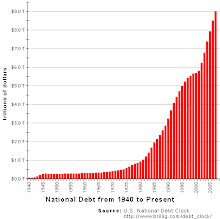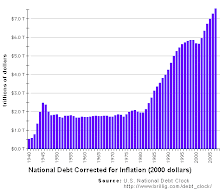New jobless claims drop to 601K; retail sales rise
By CHRISTOPHER S. RUGABER, AP Economics Writer
WASHINGTON – The number of newly laid-off Americans filing jobless claims fell more than expected last week and retail sales grew in May for the first time in three months, fresh evidence that the worst of the recession may have past.
The Labor Department said Thursday that initial claims for unemployment benefits fell last week by 24,000 to a seasonally adjusted 601,000. That's below analysts' estimates of 615,000.
Still, the number of people claiming benefits for more than a week rose by 59,000 to more than 6.8 million, the highest on records dating to 1967. The department also revised last week's data on continuing claims, replacing what had been a drop of 15,000 with an increase of 6,000.
That means continuing claims have set records for 19 straight weeks. The data lag initial claims by a week.
Retail sales rose for the first time in three months in May, as a rebound in demand at auto dealerships and gas stations helped offset weakness at department stores. The Commerce Department said retail sales increased by 0.5 percent last month, in line with economists' expectations. It was the largest increase since sales rose 1.7 percent in January following six straight declines.
Consumers may be spending a bit more and layoffs may be slowing, but companies are reluctant to hire amid the longest recession since World War II. That makes it harder for the unemployed to find work.
Jobless claims are a measure of the pace of layoffs and are seen as a timely, if volatile, indicator of the economy's health.
The four-week average of claims, which smooths out fluctuations, fell to 621,750, down from a high of about 658,000 in early April. Many economists see the decline as a sign that layoffs have peaked and the recession is bottoming out.
Still, the levels are far above what is customary in a healthy economy. Initial claims stood at 388,000 a year ago.
The department said last week that companies eliminated a net total of 345,000 jobs in May. While steep, that's about half the monthly average of jobs lost in the first quarter.
Yet the unemployment rate jumped to 9.4 percent in May, a 25-year high, as hundreds of thousands of people entered the labor market and began looking for work but couldn't find it, the department said.
As college graduates and other new entrants start searching for a dwindling number of jobs, economists expect the unemployment rate to rise even as layoffs subside.
Some economists project the rate could near 11 percent by the middle of next year. And many families are spending less and saving more as they deal with layoff fears and shrunken home equity and retirement accounts.
Troubles in the automotive sector could cause unexpected fluctuations in jobless claims. General Motors Corp. filed for bankruptcy protection June 1, joining Chrysler LLC, which filed April 30.
GM said it will close about a dozen plants as part of its restructuring. The closings, which will take place through the end of 2010, will cost up to 20,000 workers their jobs.
In addition, the company said Monday that it plans to cut a production shift at a plant in Wentzville, Mo., in August, resulting in up to 900 layoffs.
Among the states, Connecticut had the largest increase in claims of 816, followed by Louisiana, Tennessee, Arizona and Nebraska. The state data lag initial claims by a week.
Florida had the largest drop in claims of 6,655, which it attributed to fewer layoffs in the construction, service and manufacturing industries. The next largest decreases were in Illinois, Michigan, California, and Texas.
_____
Thursday, June 11, 2009
Data Suggest U.S. Economic Decline May Be Slowing
A June 11, 2009 Associate press article provides data that suggest the U.S. economy´s decline may be slowing:
Subscribe to:
Post Comments (Atom)






No comments:
Post a Comment